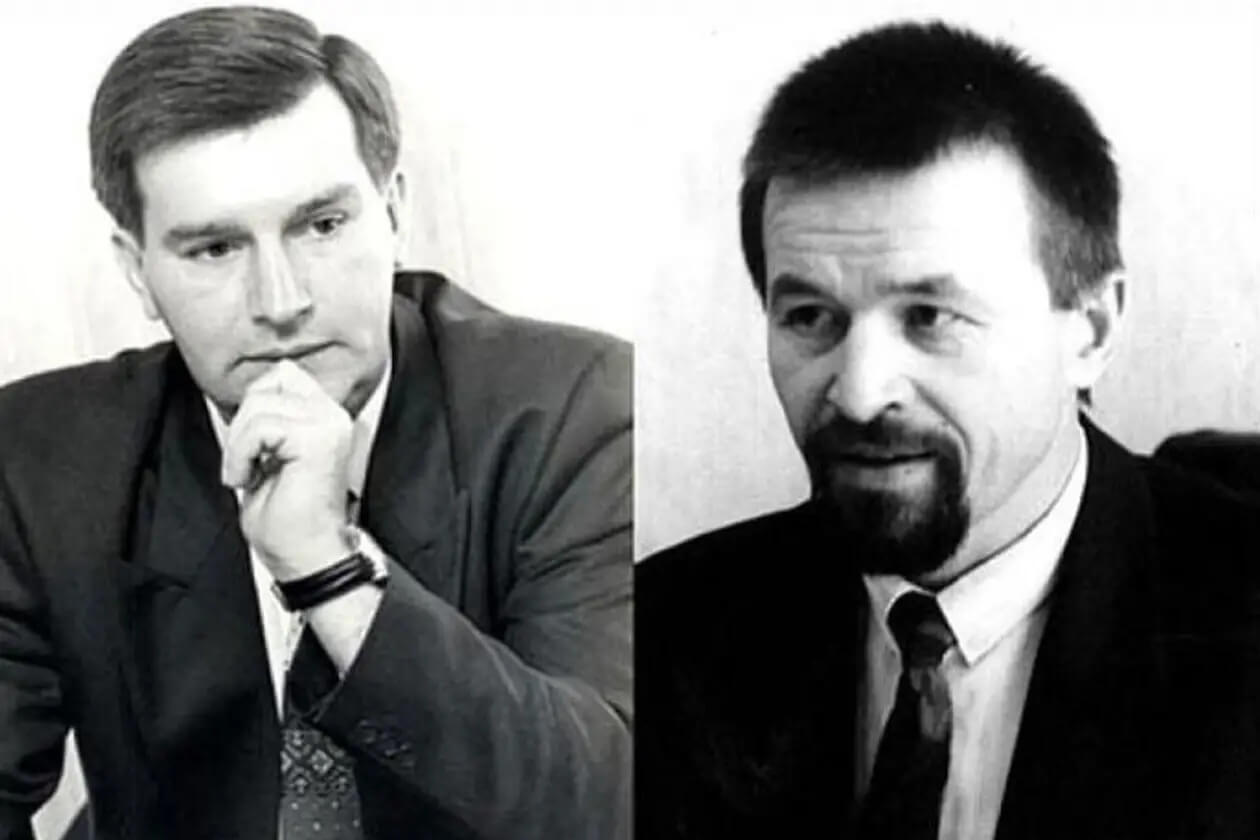Belarus could have held democratic election in 1999. Instead, Alaksandar Łukašenka’s opponents disappeared and their whereabouts are not known.

Death squad with unlimited powers to fight opponents
On September 16, 1999, the former head of the central election commission, Viktar Hančar, and his friend, prominent businessman and public figure Anatol Krasoŭski disappeared in Minsk. They walked out of a bathhouse and got into their car, but it never left the parking lot.
They were presumably abducted and killed by members of a death squad. Broken glass and traces of blood were found at the scene.
In 2000, investigators arrested Dźmitryj Paŭličenka, commander of an elite police unit, in connection with the abduction, but Łukašenka ordered his release. The Belarusian ruler fired the Uladzimir Mackievič as chief of the Committee for State Security (KGB) and Aleh Bažełka as prosecutor general to put the investigation on hold.
Other opponents who disappeared around the same time were former Interior Minister Juryj Zacharanka in 1999 and journalist Dźmitryj Zavadski in 2000. Łukašenka’s death squad is also suspected of involvement in these crimes.
Paŭličenka killed the missing men – ex-squad member
In 2019, Juryj Haraŭski, a former member of the SOBR unit under Paŭličenka’s command, confessed in an interview with Deutsche Welle to participating in the abductions of Hančar, Krasoŭski and Zacharanka.
He claimed that Paŭličenka executed the abducted men by shooting. Zacharanka’s body was cremated, and Hančar and Krasoŭski were buried at the interior ministry’s training ground, he said.
Haraŭski gave that interview to in exchange for political asylum in Switzerland. Human rights activists initiated his prosecution for “involvement in multiple disappearances.”
In September 2023, a judge in the Swiss city of St. Gallen cleared Haraŭski of the charge, saying that his testimony was inconsistent and citing insufficient evidence.
Extermination of crime bosses
Opposition politicians noted that the political opponents disappeared after Łukašenka had issued Paŭličenka’s group with “license to kill” organized crime leaders.
In the 1990s, after the Soviet Union collapsed, criminal groups took over businesses and crime was on the rise in the new independent states.
While organized crime was not as rampant in Belarus as in Russia, Łukašenka dealt with it in a way that was effective but not necessarily in line with the law.
Towards the end of the 1990s, many of Belarus crime bosses were either killed or forced out of the country.
Łukašenka made it clear that some crime bosses were “eliminated” and mentioned at least one criminal leader, Uładzimir Klešč by name.
In December 1997, Klešč aka Ščaŭlik received a phone call from an unidentified person. He went out into the yard to repark his car, and has never been seen since then.
However, the Belarusian ruler would not comment on allegations that his death squad eliminated his political opponents.
In an interview with Lithuanian media in September 2009, in response to a journalist’s remark that prominent politicians had disappeared and the criminals had not yet been found, he said: “Why do you label someone as a criminal without a trial? You are a representative of democratic society, so you should understand that he is a criminal when a court has made a decision. Neither your court, nor ours – and it must be our court – has made such a decision.”
Abductions to be investigated
Łukašenka came to power in a fair election in 1994 but immediately took democratic institutions under his control to establish long-term one-man rule.
He held two constitutional referendums to consolidate his grip and narrowly escaped impeachment in 1996.
Belarus was scheduled to hold its second presidential election in 1999. If Łukašenka had not revamped the political system and postponed the race until 2001, he could have lost it because of his poor performance during the first term. The results of the second election were not recognized by the international community.
Two years later his opponents went missing.
Some say Łukašenka crossed a red line in 1999 when he ruled out the possibility of a peaceful transfer of power. If he had left, the abductions could have been investigated, and he would probably have been held accountable.
In 2020, Łukašenka used all means to hold on to power, probably for fear of prosecution.
Immunity guarantees were added to the Constitution after the 2022 controversial referendum to make it more difficult to prosecute him after he leaves office. The move is clearly connected with the disappearances 25 years ago.
The 70-year-old Łukašenka is building a personal safety network to prepare for succession, with an emphasis on the preservation of his legacy.
Officials seem to be loyal to him, the law enforcers are on high alert, and no surprises are expected during the 2025 poll.
Łukašenka’s legacy will be under scrutiny anyway. It is only a matter of time before Belarus becomes a democracy and people can vote for their government again. A new government will definitely make it a priority to investigate the disappearances.
Also read: Haraŭski trial: international justice may break cycle of impunity